Barnacles
Subclass: Cirripedia
Order: Sessilia
Victorian zoologist Louis Agassiz, “nothing more than a little shrimp-like animal, standing on its head in a limestone house and kicking food into its mouth.
Barnacles have the longest penis in the animal kingdom, in proportion to their body length.
They are abundant on the seashore, docks, and pilings.
How Barnacles Eat
Barnacles have appendages called cirri.
They reach out into the water and grab food particles like a scoop net.
When the cirri is drawn back, the food is scraped off into the mouth.
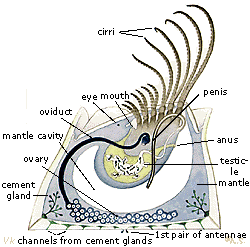
Barnacle Life Stages
There are 2 larvae stages for barnacles.
They are the nauplius and cypris stages.
Nauplius swims freely like zooplankton in the water, molting many times before becoming cypris.
Cypris does not eat at this stage, but is on a mission to find a good surface to settle and cement itself on.
Cypris attaches itself to its new spot by its antennas.
Within 12 hours of attachment we now have a mature barnacle with a shell.
 Nauplius, which is the first larvae stage.
Nauplius, which is the first larvae stage.
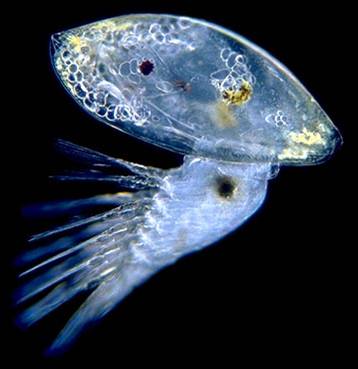 Cypris, which is the second larvae stage.
Cypris, which is the second larvae stage.
Barnacle Reproduction
Barnacles are stationary and are attached to rocks so they can’t go and find a mate.
In order to reproduce they must mate with their neighbor.
To be successful barnacles must have a strong stretchable penis.
This means that all barnacles are hermaphrodites; both male and female at the same time.
After mating season the penis is thrown away, and a new one is developed the next year.
The eggs and sperm are stored in separate cavities months before fertilization.
After fertilization occurs, the eggs hatch and the larvae stay with the mother until there is enough plankton in the spring.
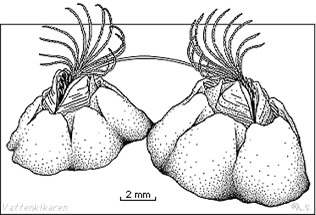
Check out these local barnacles:
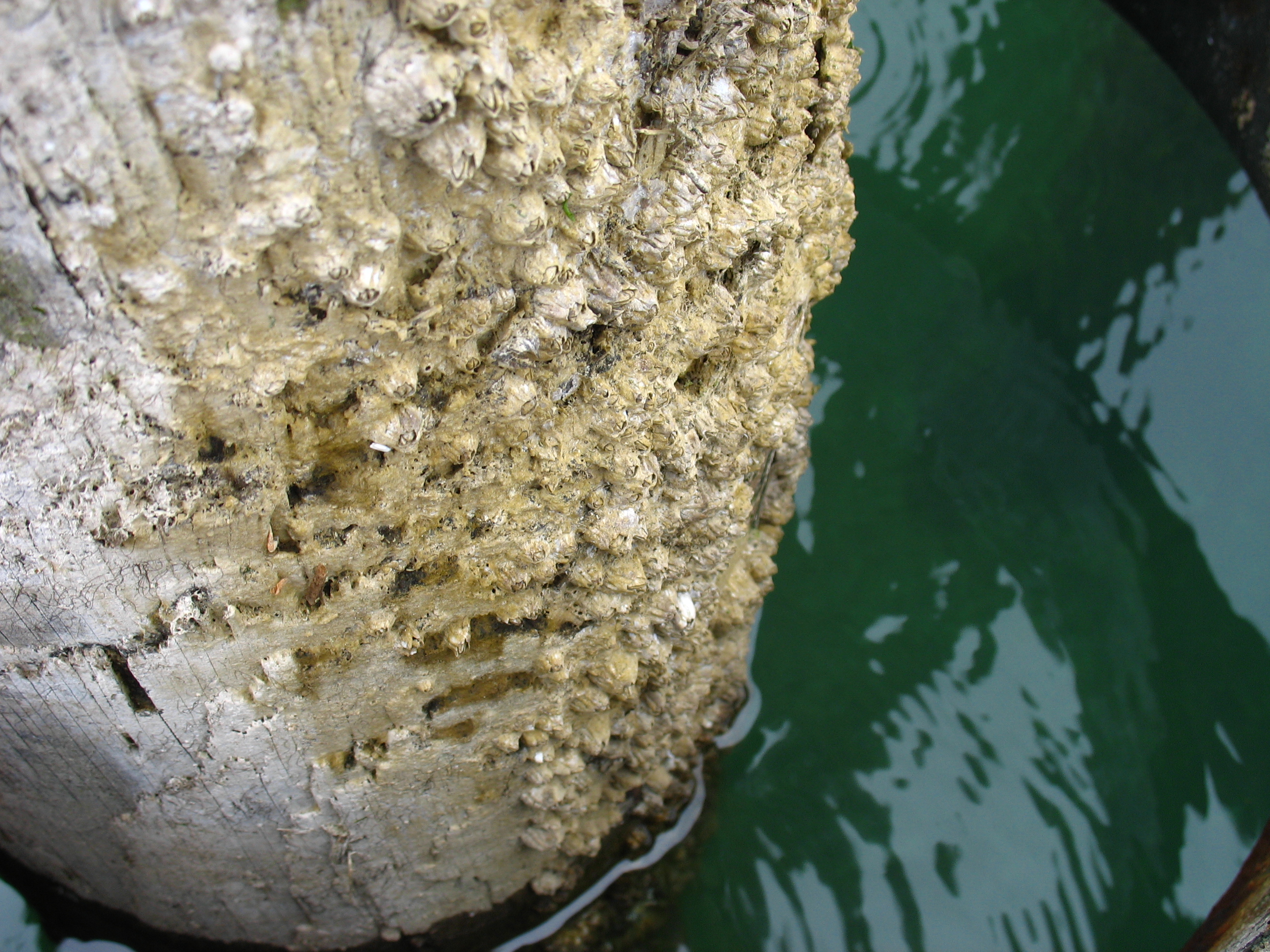 Acorn Barnacle
Acorn Barnacle
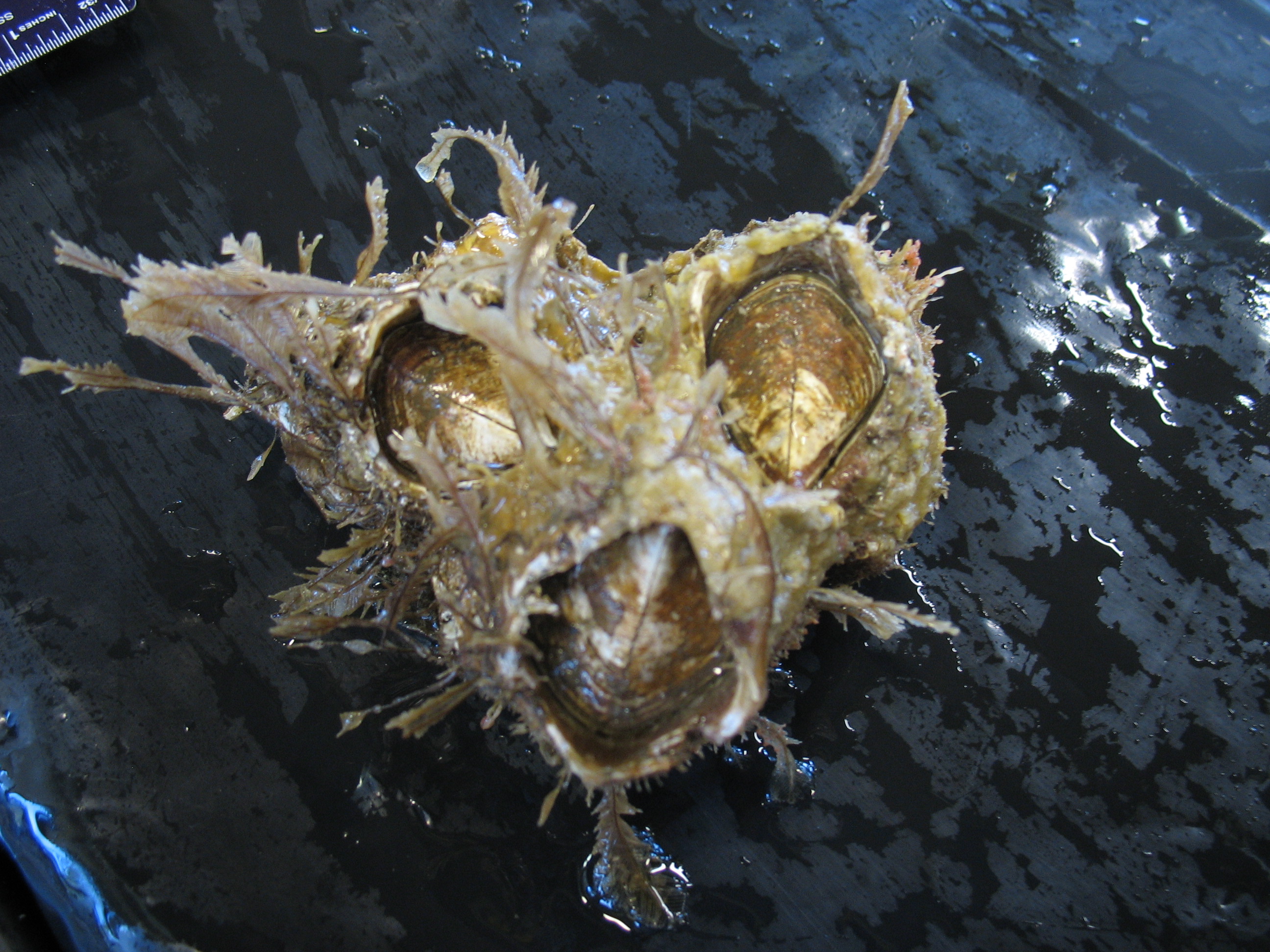 Giant Barnacle
Giant Barnacle
 Gooseneck Barnacle
Gooseneck Barnacle
 Thatched Barnacle
Thatched Barnacle
Homepage
This webpage is part of the UWT Marine Ecology 2007 Class Project

 Nauplius, which is the first larvae stage.
Nauplius, which is the first larvae stage. Cypris, which is the second larvae stage.
Cypris, which is the second larvae stage.
 Acorn Barnacle
Acorn Barnacle
 Giant Barnacle
Giant Barnacle
 Gooseneck Barnacle
Gooseneck Barnacle
 Thatched Barnacle
Thatched Barnacle